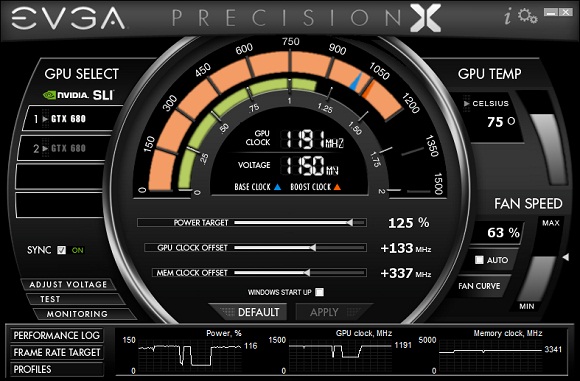A Simple Guide to Overclock your Graphics card
Overclocking your graphics card is a cost effective way to achieve or to get maximum performance out of your card, but the bad thing is that it is a complicated process and does void your graphics card warranty. Overclocking generally means running your card GPU core and memory at higher speed than the rated speed. It can increase your card performance to a significant extent, but this also depends upon your card, as every graphics card has its own overclocking potential. Some cards can be overclocked to 25 percent more and some gets overclock to only 10 percent of the rated frequencies. Here is a simple tutorial to overclock your graphics card, so that you can squeeze out maximum performance from your card. The software that will be used for overclocking is EVGA Precision X. Also make sure to install the latest drivers for your graphics card.
Overclocking of Graphics card involves increasing the frequencies of two main components that is the GPU Core and Video Memory.

How to Overclock Graphics Card
Here is a brief and precise guide on how to overclock your Graphics Card GPU and Memory.
Overclocking the GPU Core
Start by increasing the frequency in steps of 10MHz by moving up the GPU Core frequency slider. After that, test these newly increased frequencies by playing a game that is very resource demanding. Play the game for 10 -15 minutes and if you do not notice any freezing of the game then you can again increase the frequency and repeat the same step, but if any signs of freezing of the game or system occurs, then reduce the frequency that you have increased and test it again. You will reach a point where the increase frequency will be stable. After this move to next step that involves overclocking video memory.
Overclocking the Video Memory
Again start by increasing the frequency of memory in steps of 10 – 20 MHz by moving up the memory frequency slider. Play a demanding game for 10 – 15 minutes and observe carefully. If you see any yellow artifacts or spots on the screen then it’s time to move down the frequency a bit and test it again. By continuing this process you will reach a point where the increased frequency will be stable and you can stay with this setting.
Overclocking does increase a noticeable performance in games but it’s a risky process that voids manufacturer’s warranty, so do it when you have no warranty left or you badly need some extra performance increase in the latest games.
